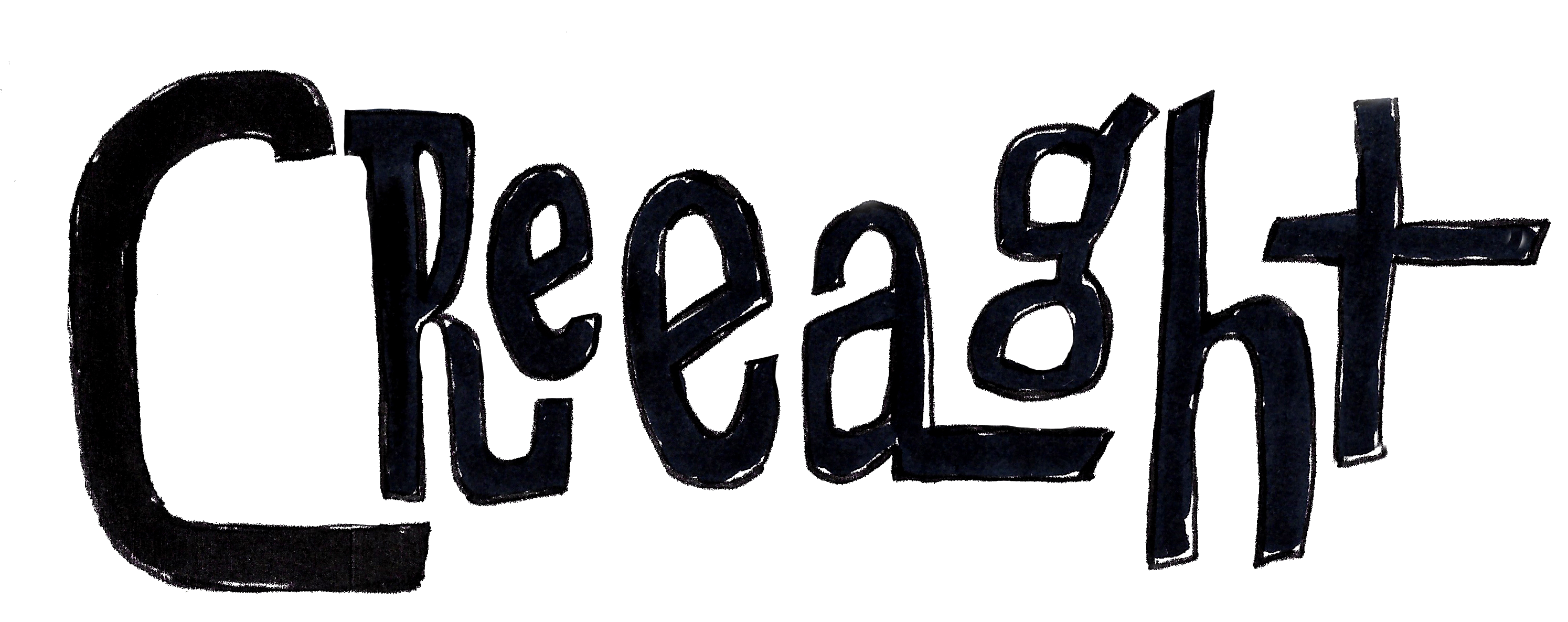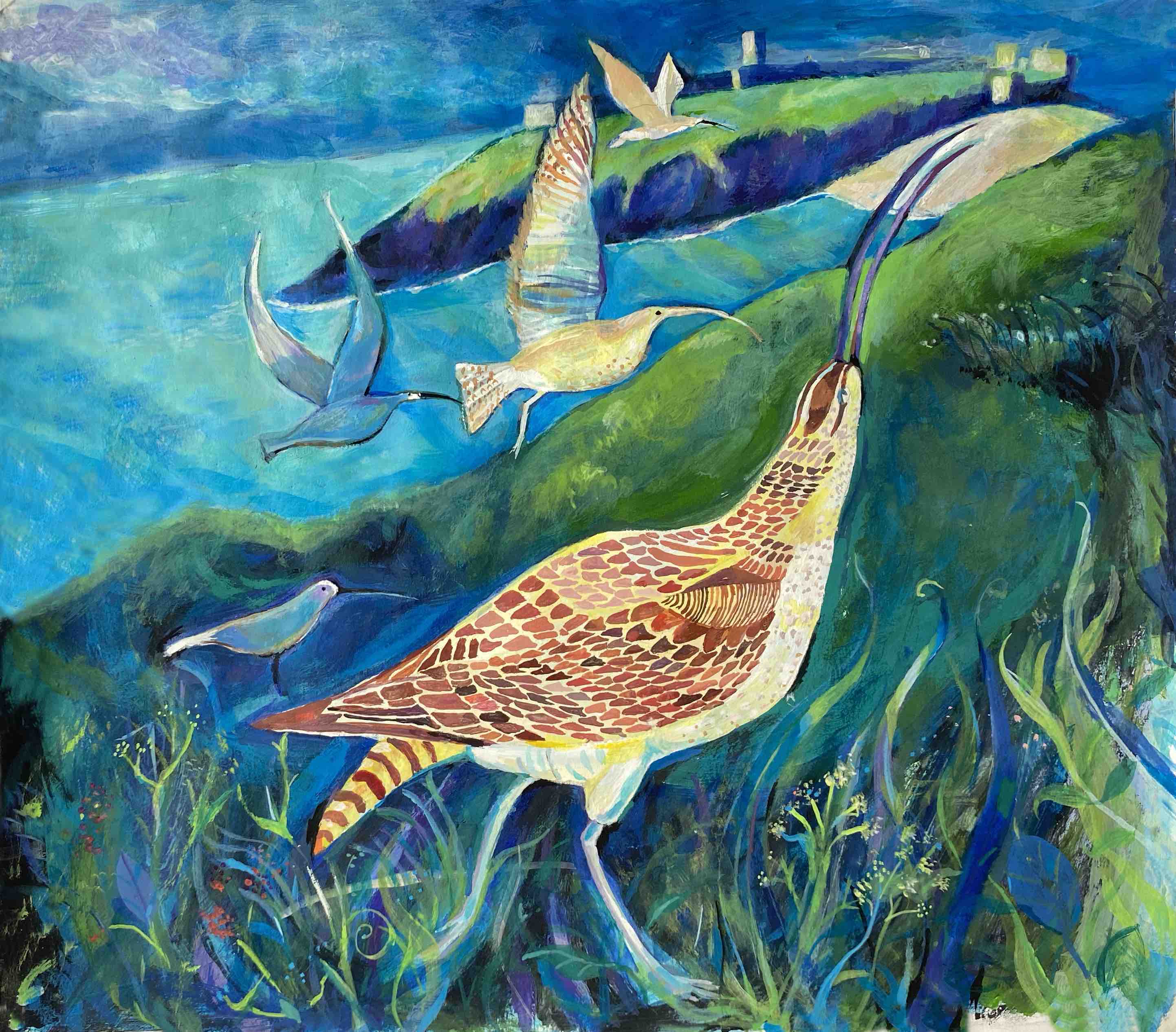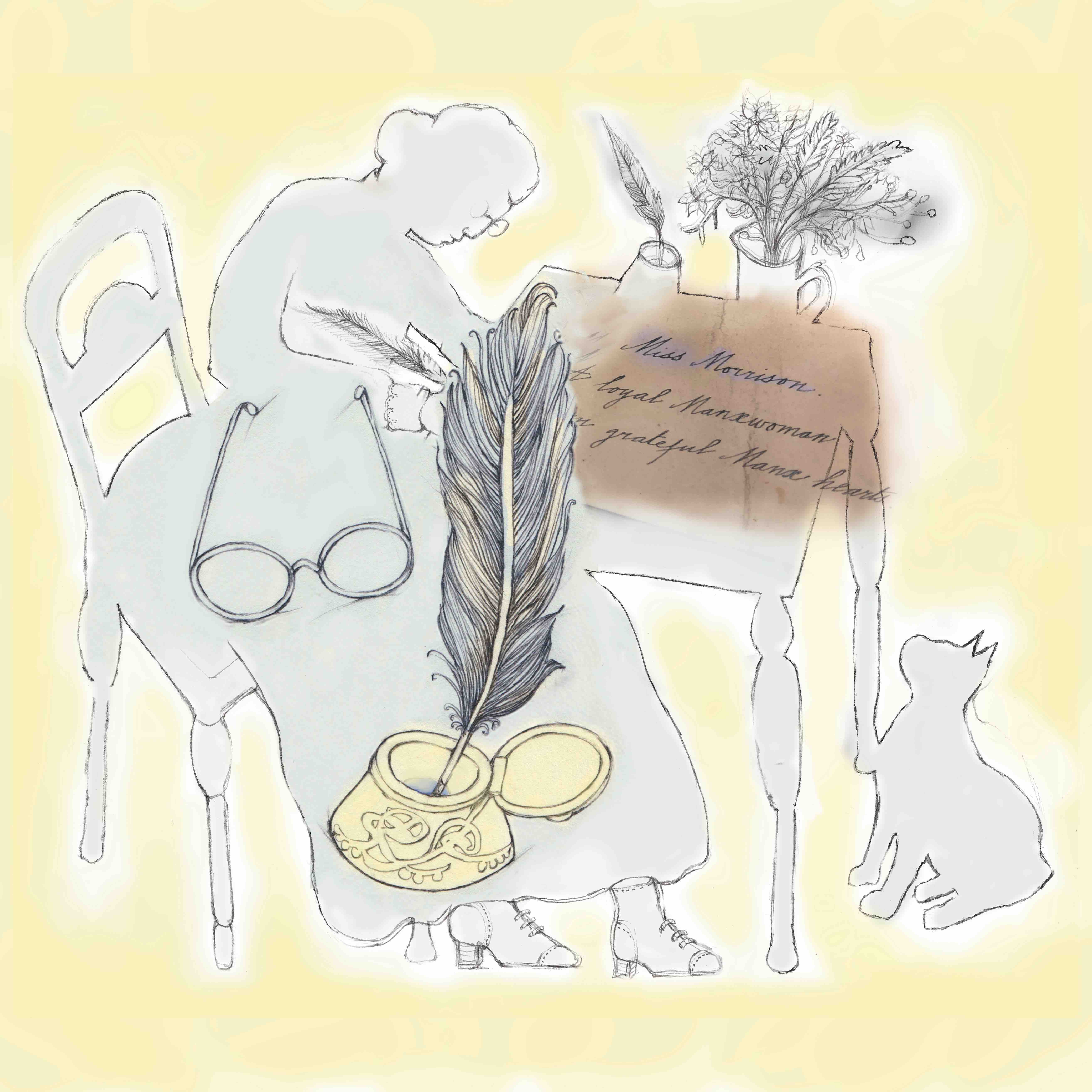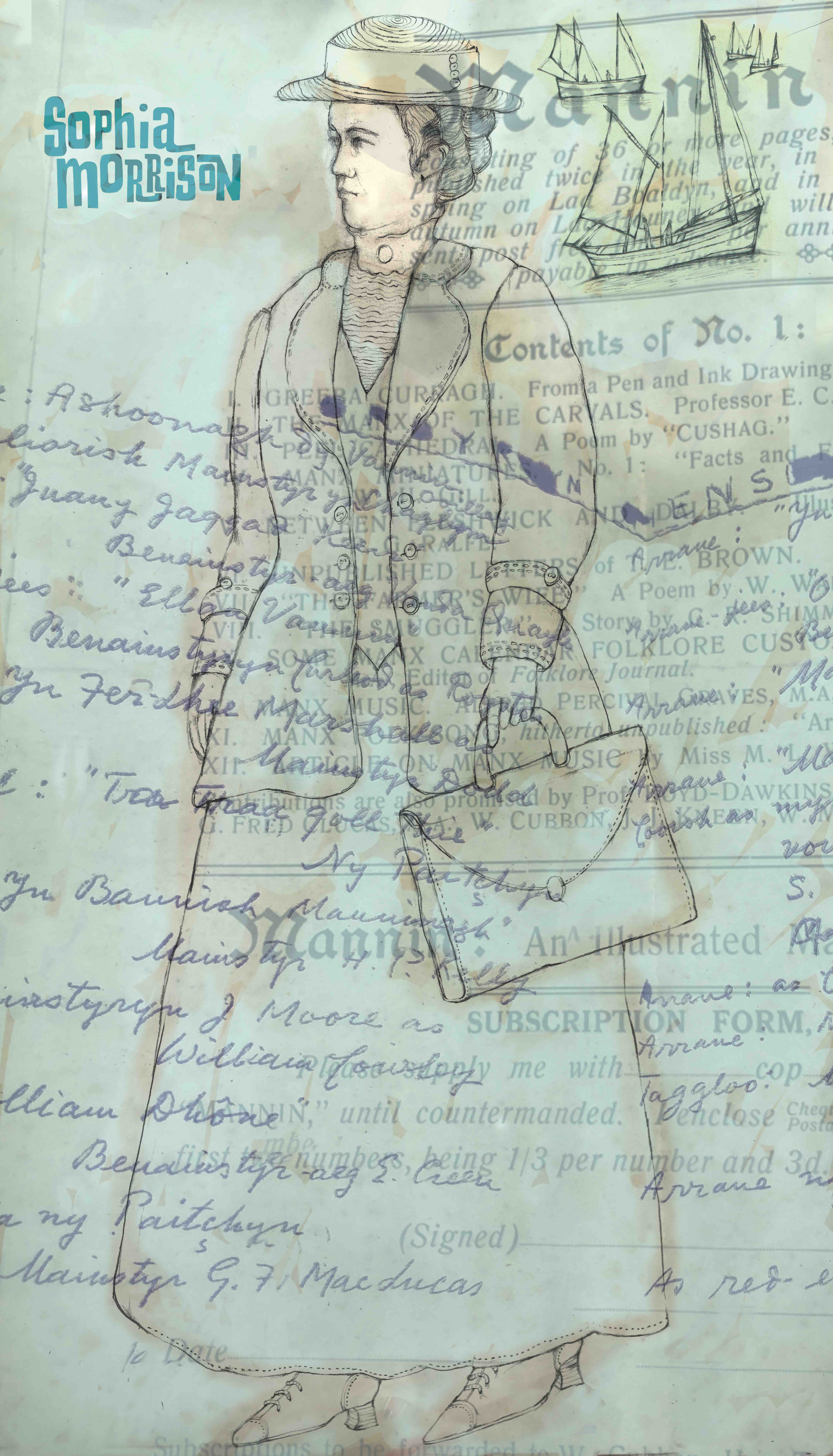
Sophia Morrison
Who was Sophia Morrison?
Sophia Morrison, who was born in 1859 in the thriving fishing village of Peel in the Isle of Man, is a familiar name amongst the inner circles of the Manx cultural scene.
Her parents, Charles Morrison and Louisa Crellin, were well-respected and active members of the community. Her father owned a small fishing fleet and it was through this that Sophia met Manx-speaking fishermen. They introduced her to Manx folk stories, songs, customs and beliefs.
Sophia's cousin, Edmund Goodwin, was a folklore collector and one of the earliest authorities on Manx Gaelic in the 20th century. He played an important role during her childhood. Under his tuition, Sophia received music lessons, and developed a keen interest in languages. She became fluent in Manx Gaelic and French, with a knowledge of Italian, Spanish, Irish and Scottish Gaelic.
Manx Language and Cultural Activist
Before the age of twenty, Sophia became one of the founding members of Manx Gaelic language classes in Peel. She became an advocate for the language, helping to establish Yn Çheshaght Ghailckagh (The Manx Language Society) in 1899 and later became secretary. It was in this role, that she went about her life long mission of preserving all things Manx.
She campaigned for Manx language education in schools, despite facing backlash from from within the Manx speaking community and beyond. She then helped to put into place a system where Manx Gaelic teachers could be certified by the board of education to teach. Although the teaching of Manx in schools at this time was brief, this was a ground breaking achievement that undoubtedly paved the way for the future of Manx Gaelic education.
Facilitator
As secretary of Yn Çheshaght Ghailckagh, Sophia developed meaningful relationships with others on the Isle of Man and beyond, both facilitating, supporting and shaping the work of others. Her persuasive attitude, diplomacy and collaborative nature served her well, and she was instrumental in the publication of many key Manx texts that to this day are still extensively used and referenced: Edmund Goodwin's 'First Lessons in Manx'; Charles Roeder's 'Manx Proverbs and Sayings'; P. G. Ralfe's 'Manx Wild Flowers' and AW Moore's Anglo-Manx Vocabulary, to name a few. Although this demonstrates her collaborative working and gives an insight into her diverse interests as an individual, it could also be argued that her role as a facilitator obscured the extent and impact of her work, with others (often men), receiving the accolade.
 The Winds', The Waters' and The Curlew's cry - Illustration by Jo Davies
The Winds', The Waters' and The Curlew's cry - Illustration by Jo Davies
In the last few years of her life, Sophia became the mastermind behind 'Mannin' — a journal relating to all things Manx that aimed to preserve and promote Manx culture, language and music. She used her extensive network of colleagues and friends to curate the journal which featured work from accomplished Celtic scholars, newly commissioned work, music and articles.
Perhaps the most remarkable contributor to Mannin was Mona Douglas, who became one of the key driving forces behind the modern Manx Cultural revival. Sophia mentored Mona, teaching her how to notate correctly and encouraging her to collect folklore and music. Sophia Morrison created space for a younger generation and became a role model for Mona and other young women in a field dominated by men.
Collector
Sophia collected extensively in the fields of music, Manx Gaelic language, charms, sayings and folklore. She developed an understanding, sensitivity and respect for the communities she was collecting from and one of her most well-known works 'Manx Fairy Tales', which was a culmination of this, popularised Manx Folklore for the generations that followed.
“In lonely farms, in the houses of seafaring folk in towns or
village, in lanes or fields, we met them, and at her greeting in
the old language, eyes brightened and tongues unloosed and they
were their real Manx selves”
- Alice Mallt Williams
A Victorian Age
To understand the gravity of her life's work, it is important to understand the context in which she lived, and the boundaries and obstacles this presented.
Sophia Morrison was a woman in a Victorian age, and this was perhaps one of the biggest obstacles she encountered. Although the late 19th century was a period of structural and societal change and saw the rise of the suffragist movement, women were placed in the 'private' sphere of the home and family, whilst 'public' spheres were reserved for men. Sophia's public role as secretary of Yn Çheshaght Ghailckagh and the civic, communal and national duties this gave her, transgressed Victorian boundaries and broke the mould.
 My Dear Miss Morrison - illustration by Jo Davies
My Dear Miss Morrison - illustration by Jo Davies
The political landscape at the time and the oppression of Manx language, culture and identity also meant that she had to be defiant and resilient in her work. She faced resistance against the promotion and publication of the Manx language not only from education authorities, but alarmingly, from members of the Manx speaking community. This did not discourage her.
Throughout her life, Sophia was also significantly troubled by neuralgic headaches and her eyesight. She was later told by her ophthalmologist that her eyes were in 'such a bad state' that she would have to give up 'all reading, writing and sewing'. However, despite medical advice and the obstacles her disability would have presented to her day to day life and work, she continued to write and collect.
Legacy
In January of 1917, Sophia Morrison passed away in her native Peel.
“And with her quiet presence passed away,
Bright, burning brands that fired our Island hearts,
And showed the sweetness in our homely ways,
Finding the gold amid the rugged quartz.
'Alas' an old friend mourned 'a light goes out,
With her that never will be lit again.'
Nay, friend, the bearer passes, but her lamp, Burns on undying”
- Cushag, 1917
Sophia's comprehensive work in the fields of Manx language, music, folklore, theatre, literature and dialect makes her one of the most valuable contributors to the revival efforts of the last two centuries.
She should be remembered as a pioneering cultural figure, both in her contribution to the national and cultural revival, and for the obstacles she overcame as a Manx woman in an environment dominated by Victorian and English colonial attitudes.
Her tireless and diligent work has meant that there is not an edge of our culture that exists today that does not bear her mark, and this should be uncovered, shared and celebrated.
 Sophia Morrison - Illustraton by Jo Davies
Sophia Morrison - Illustraton by Jo Davies
To learn more about Sophia Morrison:
- Read New Manx Worthies by Dollin Kelly
- Read Manx Fairy Tales by Sophia Morrison
- Read Their Enchanted Isle by Dereck Winterbottom
- Listen to Sophia Morrison: The life & work of a great Manx activist by Breesha Maddrell (available at: https://soundcloud.com/culture-vannin/sophia-morrison-the-life-work-of-a-great-manx-activist)
Sources
Mannin Journal — Vol 5. No.9 (available at http://www.isle-of-man.com/manxnotebook/mannin/vol9.htm)
Manx Fairy Tales by Sophia Morrison
New Manx Worthies by Dollin Kelly
Public Lives: Women, Family, and Society in Victorian Britain by Eleanor Gordon and MS Gwyneth Nair
Sophia Morrison, Mona Douglas and their enchanted Isle by Dereck Winterbottom
Sophia Morrison: The life & work of a great Manx activist lecture by Breesha Maddrell (available at: https://soundcloud.com/culture-vannin/sophia-morrison-the-life-work-of-a-great-manx-activist)
This is Ellan Vannin: A miscellany of Manx Life and Lore by Mona Douglas